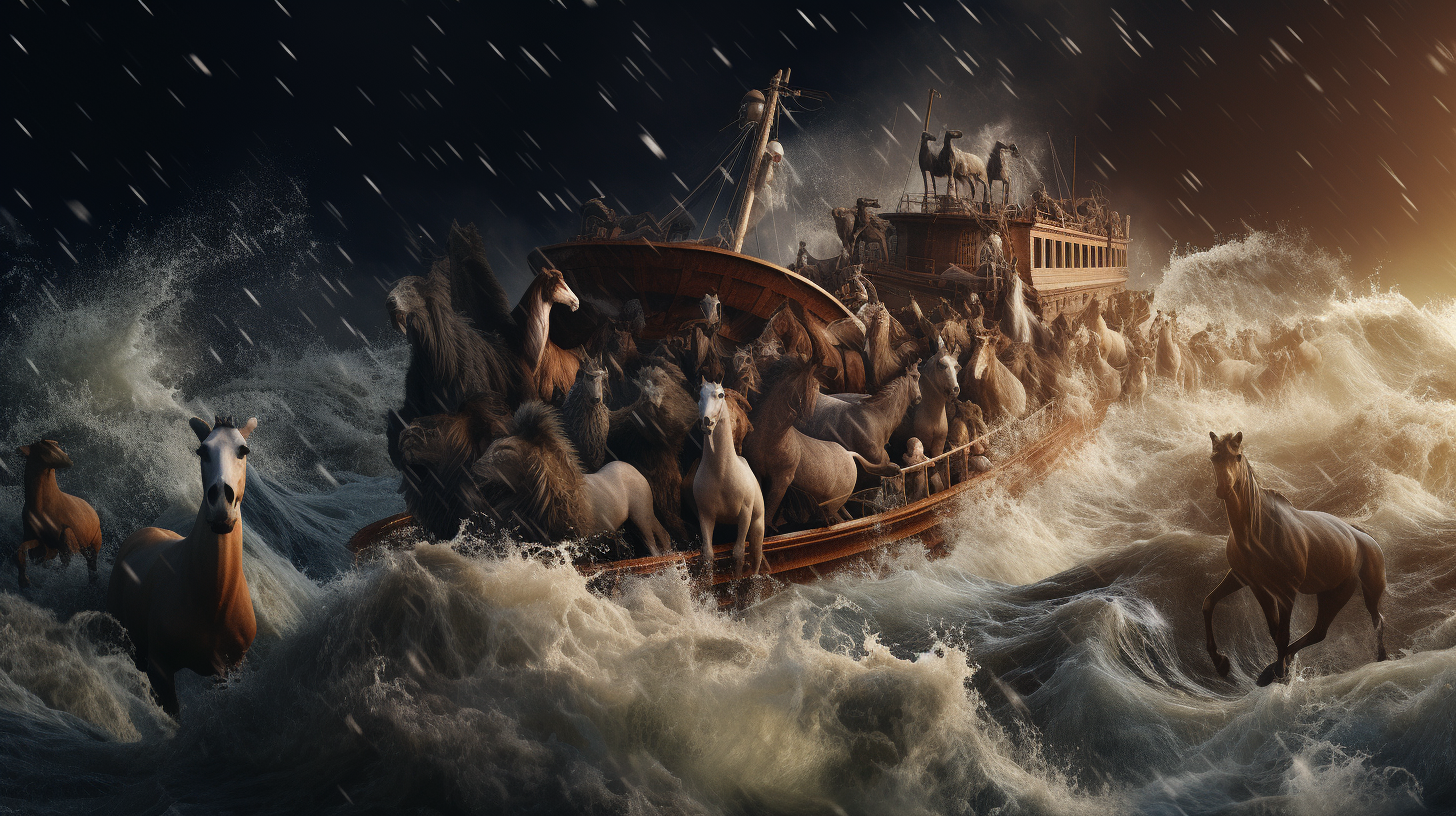Back in 1959, Captain Ilhan Durupanar stumbled upon a remarkable find while conducting an aerial survey above the Turkish Highlands. Upon documenting earthquake-affected terrain, he chanced upon a discovery that would captivate the minds of many for years to come.
The unexpected sighting of remnants of a colossal vessel at an altitude of 6,500 feet, far removed from any water source, left experts puzzled. This enigma in such a remote location sparked conjectures surrounding the timeless legend of Noah’s Ark.
Enshrined within the Book of Genesis, the tale of Noah’s Ark symbolizes a crucial event in biblical lore, tracing back from the inception of the cosmos to the genesis of humanity from Adam and Eve.
Upon witnessing the pinnacle of human depravity, God opts to purify the Earth, sparing only Noah and his kin under the provision to build an ark to house pairs of every animal species on the planet.
The intricate narrative of constructing the ark, its gigantic dimensions (515 feet long, 86 feet wide, and 51 feet tall), and the epic 40-day deluge weave a mesmerizing narrative. After the waters subside, the ark finds its resting spot on the Mountains of Ararat in modern-day Turkey.
Over the centuries, scholars and historians have viewed this account as a symbolic allegory, a cautionary tale illustrating the repercussions of trespassing divine boundaries.

Despite diverse interpretations, the discovery by Captain Durupanar and other intriguing findings have sparked curiosity among adventurers and scholars. Do these revelations offer tangible proof of Noah’s Ark, lending credence to its biblical narrative?
The quest for evidence backing a colossal ancient flood and the hunt for the ark present dual avenues for exploration. Major natural disasters often leave enduring imprints on the terrain lasting for generations.
Curiously, studies suggest a significant flood occurred near Durupanar’s revelation.
In 1997, an expedition led by Americans William Ryan and Walter Pittman, comprised of geologists, geophysicists, and oceanographers, uncovered traces of the Black Sea Deluge.
This geological event, dated roughly 8,000 years ago, transpired due to a sudden glacier collapse, triggering a surge from the Mediterranean Sea that reshaped the region, eventually forming the Black Sea.
The magnitude of the flood might have displaced thousands, leaving a profound mark on the collective memory of survivors. Could this incident lay the groundwork for flood tales passed down through epochs?
In 1985, a breakthrough emerged in the search for Noah’s Ark. A 4,000-year-old clay tablet unearthed in the attic of a British Air Force veteran hinted at shedding light on the flood’s occurrence and the ark’s final position.
Despite the years taken to decipher the tablet, it provided fresh insights into the flood narrative, recounting a catastrophic deluge account strikingly resembling the biblical rendition.
Notably, the Epic of Gilgamesh, a narrative pre-dating the biblical version by more than a millennium, bears marked similarities to Noah’s Ark, blurring the boundary between myth and reality.
The prevalence of flood myths across diverse cultures underscores a shared theme: humanity’s resilience and adaptability when faced with catastrophes. Whether Noah’s flood, the Black Sea Deluge, or the Epic of Gilgamesh, these anecdotes exemplify our knack to persevere amidst nature’s severest trials.
Watch the Video Below:
To sum up, the enduring saga of Noah’s Ark remains a source of fascination, serving as a poignant reminder that beneath the veils of myth and history lies a testament to human resourcefulness and resolve in confronting nature’s most daunting challenges.
